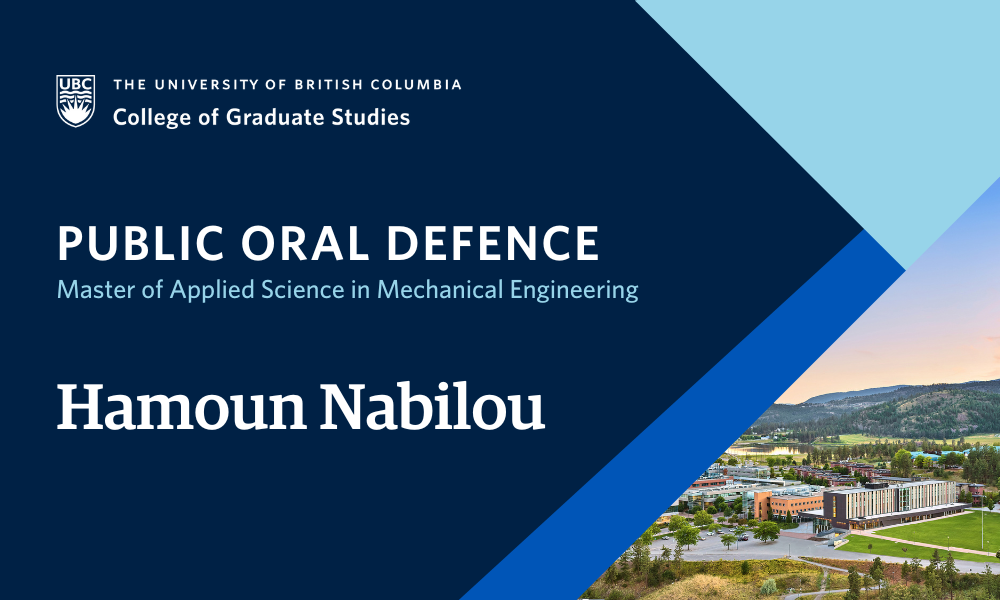
- This event has passed.
Thesis Defence: Combustion characteristics of micron-size carbonaceous particles as energy carriers and fuel additives
September 5 at 9:00 am - 1:00 pm

Hamoun Nabilou, supervised by Dr. Sina Kheirkhah, will defend their thesis titled “Combustion characteristics of micron-size carbonaceous particles as energy carriers and fuel additives” in partial fulfillment of the requirements for the degree of Master of Applied Science in Mechanical Engineering.
An abstract for Hamoun Nabilou’s thesis is included below.
Defences are open to all members of the campus community as well as the general public. Registration is not required for in-person defences.
ABSTRACT
Studying single-particle combustion is essential for understanding the fundamental behaviour of solid particles, whether used as energy carriers or fuel additives. Compared to biomass and coal, relatively small amounts of volatile matter, ash, and moisture are available in hydrochar, which make this a desirable fuel for energy applications. Additionally, while graphene oxide-based particles have proven efficacy as fuel additives, their combustion behavior as particles remain unknown. In the present study, the flame combustion characteristics of single micron-size carbon-rich hydrochar particles are studied for the first time and compared against those of coal and arbutus bark (the wood feedstock from which hydrochar is derived). Moreover, the combustion behavior of graphene oxide and iron-decorated graphene oxide are examined for the first time. Arbutus bark underwent hydrothermal carbonization to produce hydrochar. Iron nanoparticles were added to octadecylamine-functionalized graphene oxide. A burner is used to combust the particles in the products of a premixed flat flame. Five oxygen mole fractions of the combustion products (12% to 38%) are examined at a fixed adiabatic flame temperature of 1850 K. Simultaneous shadowgraphy and luminosity imaging are conducted to study the combustion of the particles and measure the ignition delay and combustion time. Arbutus bark particles ignited heterogeneously at high oxygen mole fractions, while hydrochar and coal particles featured an overlapping two-stage combustion process. Graphene oxide burned similarly to hydrochar, while iron-decorated graphene oxide disintegrated violently upon ignition. At low oxygen mole fractions, the arbutus bark particles burnt following a sequential two-stage process, while hydrochar and coal demonstrated overlapping combustion stages. Iron-decorated graphene oxide exhibited fragmentation behaviour for all conditions. Hydrothermal carbonization of arbutus bark created pores on the hydrochar particles which are hypothesized to cause fragmentation, rocketing, and fast particle ignition. This carbonization also increased hydrochar combustion time, but it still burned faster than coal. Generally, the results show that hydrothermal carbonization can upgrade biomass into a more energy-dense fuel with better combustion characteristics, enhancing burner efficiency and sustainability. Decorating graphene oxide with iron decreased the ignition delay and significantly increased the burning rate, which are desirable characteristics for fuel additives and improved fuel combustion.